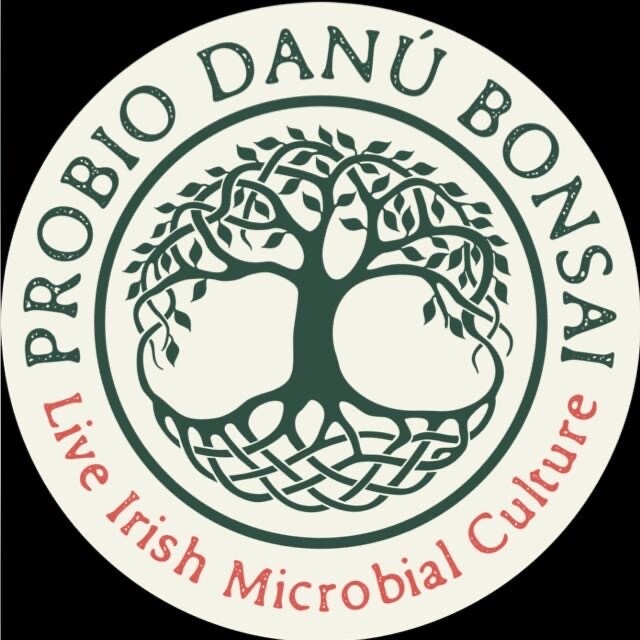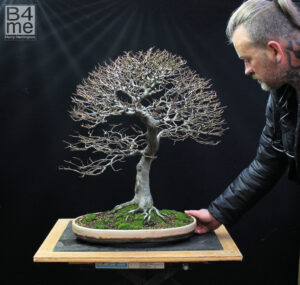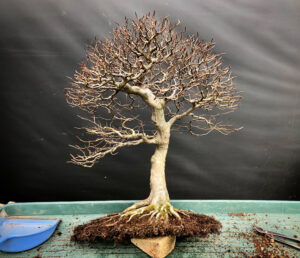
This article first appeared in Bonsai Focus magazine, January 2022.
You will have already realised that bonsai take a long time to develop. Years can be spent developing branch structures, ramification, taper and flowers on trees that are grown for their blossom.
If there is a way of fertilising our trees that will encourage the growth that we need faster, we are very often the first to try them out, in the hope of reducing the time, the years, before we attain our developmental goals.
In fact, there are a myriad of products and ways to fertilise our trees on the market. These nearly always involve increasing or altering the NPK we give them. Pumping nitrogen into our soils in such a way as to encourage maximum growth and vitally.
In recent years there is a new approach to bonsai emerging. This is the use of “good” and “healthy” bacteria within the soil mass that encourage stronger, healthier and more vigorous bonsai. One of the ways that they do this is to enable our bonsai to tap into the fertilisers that we apply by unlocking the NPK already within the soil and making it more easily available to the roots.
Almost every part of a tree (and everything around us including the human body), is totally reliant on bacteria and fungal activity. Tree growth and human health, are all results of bacterial and fungal interactions. Indeed, mitochondria and chloroplasts evolved from bacteria.
By harnessing these ecosystem interactions using strong beneficial bacteria, we can also encourage a stronger and healthier soil mass, leaving us with stronger and healthier trees.
As I will discuss later in this article, there are some bacteria that can be used to change the type of growth that our trees put out every year. Imagine that instead of continually having to prune away coarse dominant growth in Spring, to fight against apical dominance, a bacteria could naturally reverse apical dominance in a tree and invest its energy across the entire branch structure…..even in those weaker low branches.
And of course, harnessing the natural apical tendencies of the tree as a whole, as well as each branch, encourages much stronger backbudding, something of a necessity when growing bonsai.
There are also those trees that suffer unexplained or difficult to address health problems, often related to environmental or local mature street trees passing around pathogens. When a “bad” bacteria or pathogen attacks the leaves and woody material of a bonsai, the tree will have some natural resistance in the form of its internal defences, “good” bacteria, that will try and subdue its spread.
When one of our trees is unable to fight off a pathogen effectively on its own, many of us (myself included) have then turned to chemicals to rid the tree of its attacker. Unfortunately, this strips the tree of not only bad bacteria but also good.
This is a new advancement; rather than strip the tree of all bacteria, we can apply beneficial bacteria that will “flood” the alien pathogen so that it dies.

A perfect example of the effects of Danú on a Hawthorn bonsai (Crataegus monogyna) in Spring. I have been developing this tree for nearly 20 years, and every Spring, there will be 5-6 very plump and vigorous shoots emerging from the crown. If I do not prune these immediately, they will extend and become very coarse. These super strong shoots will ‘steal’ the strength of the shoots lower down in the branch structure. Because this type of growth is not satisfactory in the apex of a deciduous tree it then needs to be removed, hopefully before it ruins the existing network of fine growth in the area.
This Spring however, as illustrated above, there have been many more new extending shoots. Each one equal in size and strength. It is something I had never seen before! These perfectly equal shoots extended across the whole of the tree, even in the normally typically weaker lower branches.
Altering Growth Habits In Bonsai: Reversing Apical Tendencies
Dr Karen O’Hanlon is a microbiologist from Ireland that has for many years been developing microbes that are beneficial in agriculture. After a chance meeting with Irish bonsai enthusiast Michael Guerin at an Agricultural Show in Ireland, Dr Karen developed a three strain live bacteria inoculation for the special needs of bonsai, specifically aimed at improving the growth habit of our bonsai and increasing disease resistance. Bonsai has limited chances of swapping microbes between plants or benefiting from multi-cropping therefore this specific targeting with the ‘right’ strains was of paramount importance.
The culmination of these 3 strains is known as Danú and has been hugely interesting for bonsai cultivation.
Danú naturally reverses the apical tendencies of our trees and distributes growth across the entire branch structure. During our traditional bonsai maintenance over the year, we quickly learn to ensure that the strongest shoots in the upper branches must be repeatedly pruned to discourage coarse new shoots, and to encourage stronger growth in the lower branches. The strains in Danú, when applied to the soil, alter the growth habit of a bonsai and the repeated pruning of apical shoots is no longer necessary.
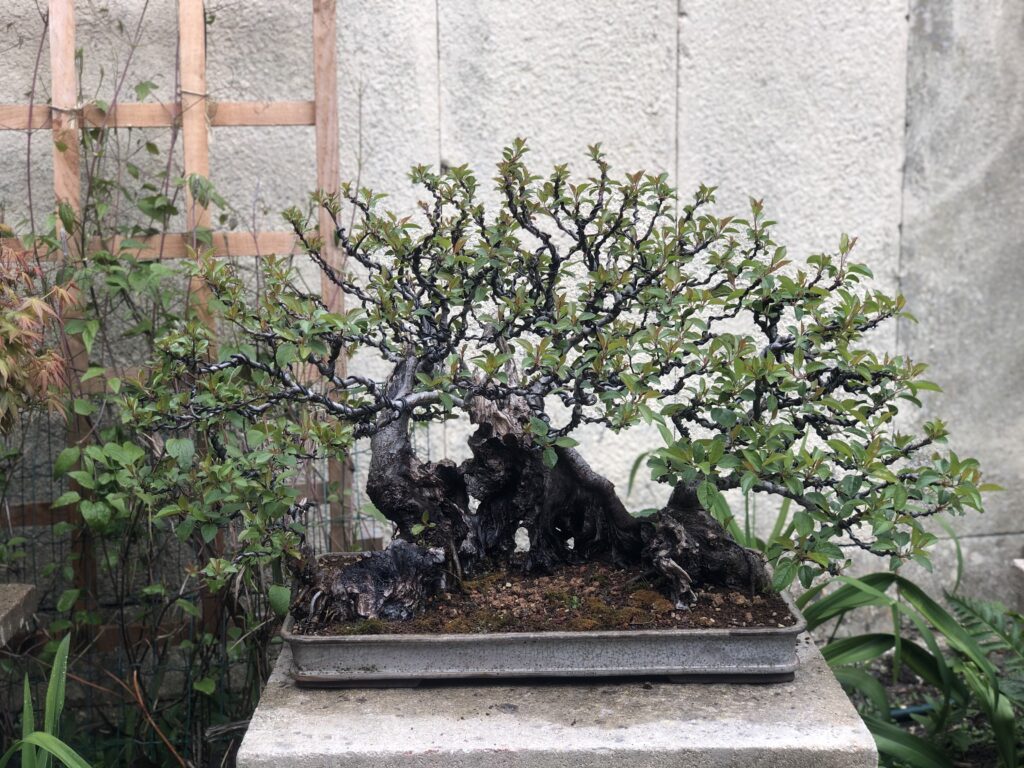
A second example of the perfectly uniform Spring growth on a bonsai treated with Danú on my Crab Apple raft. Crab Apples (Malus sylvestris) are notorious for their very coarse apical growth. But as can be seen in the image here, the growth is perfectly equal and well-distributed. So well behaved was the tree that it didn’t require pruning until midsummer when I finally gave the tree a trim.
Altering Growth Habits In Bonsai: Backbudding And Ramification In Deciduous Trees
A further benefit of the 3 strain bacteria has been a huge increase in ramification and backbudding in my trees, at all stages of development. The redistribution of energy in the branches has meant that inner branches have become much stronger and dormant buds in the interior have extended (backbudded). Essentially, the growth habit of all trees has become bushier.
Altering Growth Habits In Bonsai: Backbudding And Ramification In Deciduous Yamadori
As anyone who has collected deciduous trunks for bonsai will know, the next step after recovery is building a new trunkline and branch structure. Typically, the tree will respond with 2 or 3 very strong new leaders, shoots emerging from the top of the trunk and growing with some strength.
With the application of Danú, I have found that my newly collected trees will pop 3-4 times as many new buds and shoots, giving me many more design options once the tree has fully recovered from collection.
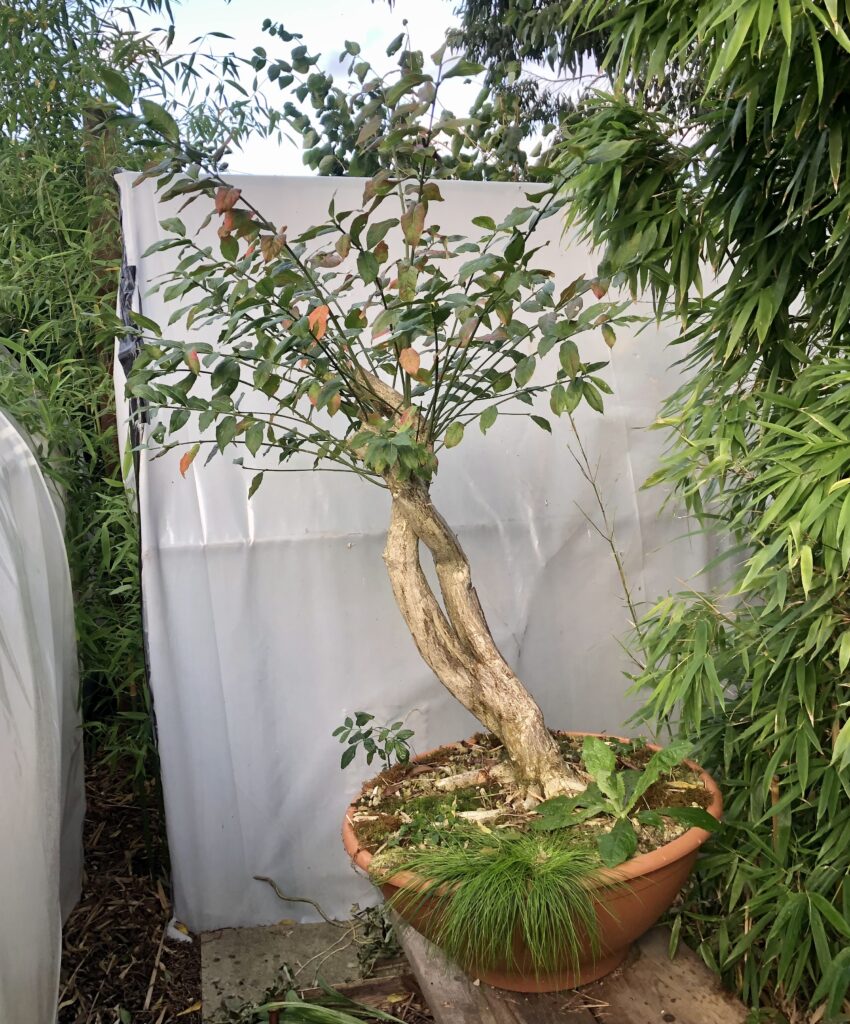
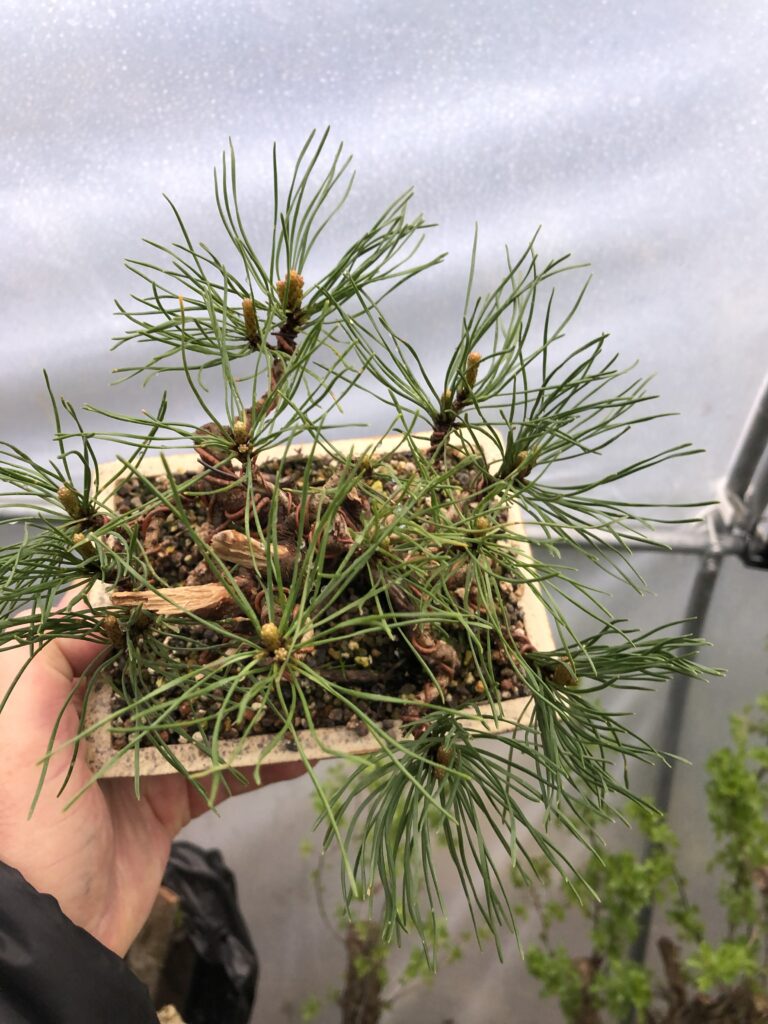
Altering Growth Habits In Bonsai: Balanced Growth and Backbudding In Coniferous Species
This relatively young Scots Pine shohin is an excellent example of the very even distribution of energy across a Pine tree in Spring after treatment with Danú. Ordinarily I would expect there to be a range of strength in the buds across the tree.
Some, particularly in the apex, would require pinching out as they extended to ensure that the smaller candles have a chance to extend as well.
However, last Spring the candles are so uniform and well-behaved, I was able to simply allow them to grow. Not only is this very useful in terms of developing the branch structure of a pine and avoiding weakened branches, it also greatly reduces the amount of time spent working on nipping-out candles in Spring.

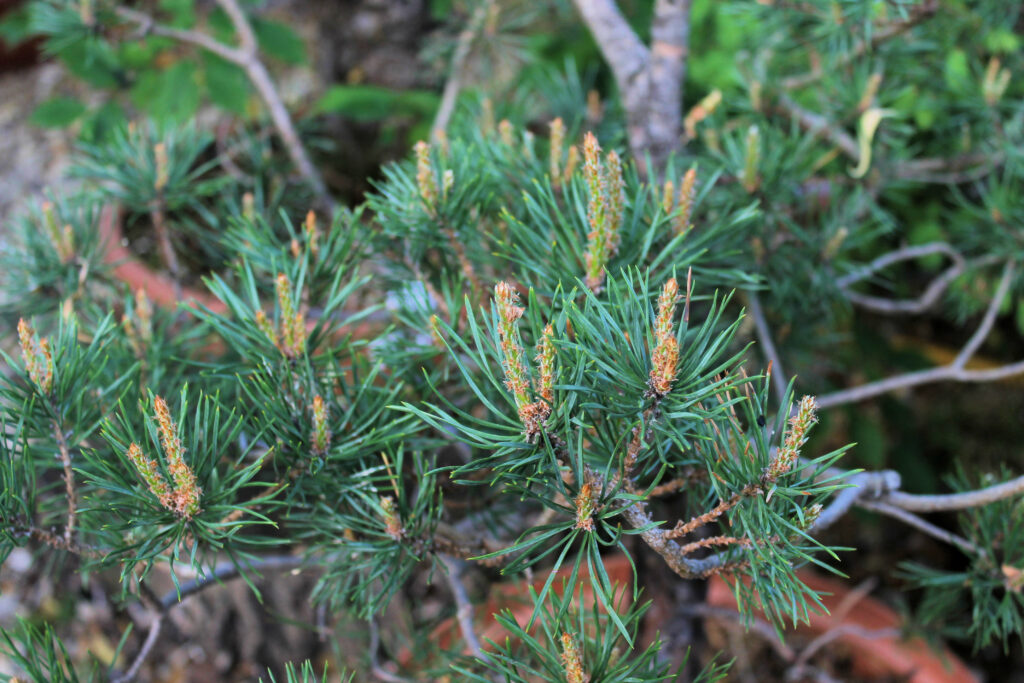

Picea abies/Norway Spruce are a species apt to produce coarse growth. The image above of the new growth and the new buds set ready for next year shows exactly how receptive Spruce are to the Danú bacteria.
Applying Bacteria to the Soil
Dr Karen O’Hanlon has supplied two different ways of adding the 3 strains of microbes to the soil; one a live culture in liquid form, and the other, a dry mix containing the spores (seeds) of the microbes.
The liquid form has a relatively short shelf-life and is best used within a month of opening. I have found that the best way to apply it is to dilute with rainwater and then spray the live culture onto the surface of the soil. Once the microbes take hold on the surface of the soil, it quickly innoculates the rest of the substrate.
I applied the microbes just once in early Spring and continued to see the positive effects on my trees for the rest of the year. During the Winter however, when the soil temperature drops below 8C, the level of microbes in the soil is naturally reduced by the cold temperatures and a further application of fresh Danu is recommended to ensure the strongest levels within the soil as the tree comes out of dormancy.
The dry form has an indefinite shelf-life is simply applied to the soil surface or added during repotting. Once they become wet, the spores will germinate and colonise within the substrate. This method of application is slightly slower for the effects to take place but just as effective.
Note that because we are creating a healthy biome for our trees with the use of natural products, it is important to try to avoid using chemicals, particularly chemical fertilisers. Slow-release organic fertilisers are ideal and will enhance the health of the soil mass.
Conclusion
We have all seen Superthrive-type ‘wonder’ products come and go over the years. Most have had scattergun approach, with a little of everything thrown at the tree in the hope that something will work on the tree in question.
What Danú is doing however is very targeted and is literally designed by someone heavily involved in microbiology and a has great understanding of the way individual microbe strains work on plants.
Dr Karen has chosen particular strains of microbes that are particularly strong and robust and have been carefully selected from the environment, rather than a large list of mycorrhizae that may, or may not, do anything for our trees.
Danú and Marú are available from Dr Karen’s company ProBio Carbon throughout the world. After my experience of the past 18 months, I strongly believe the use of beneficial bacteria and fungi are the way forward in bonsai, in terms of obtaining healthy trees in peak condition with excellent growth characteristics.
And right now, Dr Karen is the pioneer of this new direction.
Danu and ProBio Carbon products are available through the Bonsai4me.com/shop at many parts of the World including Europe and the US.

